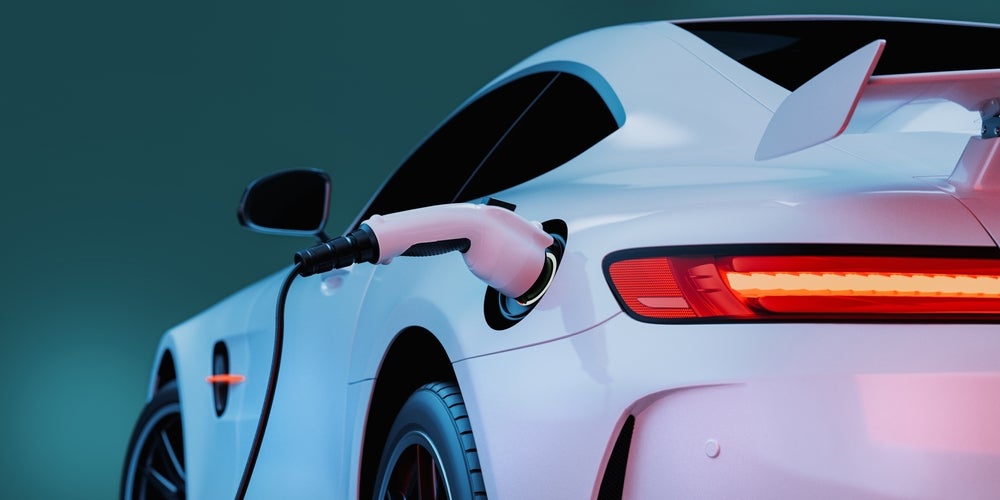
As the automotive industry grapples with the various changes that the rise of digital has brought to consumer expectations, industry experts at the inaugural DBC for Vehicle Finance Live Debate discussed some of digital’s impacts on motor finance. Jonathan Minter reports
It is no secret that the sale of motor finance is due to fundamentally change in the coming years, as technology allows lenders, dealers and manufacturers to create deeper relationships with their customers than ever before, and customer expectations, driven by positive experiences in other sectors, become increasingly demanding.
How technology can be used to create a relationship with customers was one of the key topics of conversation brought up in the inaugural DBC for Vehicle Finance debate, held at the Law Society, London, in April.
Defending the industry’s history in creating relationships with its customers, Spencer Halil, director of Alphera Financial Services, said that even two decades ago the good sales people and lenders kept a relationship with their customer, albeit in a manner which suited the company.
However, ‘good’ is a relative term, he added, and what was good then was adequate for the time, but lenders need to be far better now, with customers now wanting companies to interact with them at a time and in a way that suits them.
James McGee, managing director of Northridge Finance, agreed that the industry has changed dramatically in recent years, but said most companies still do not really know their customers.

US Tariffs are shifting - will you react or anticipate?
Don’t let policy changes catch you off guard. Stay proactive with real-time data and expert analysis.
By GlobalData“I’ve been in this industry for 30 years, and it’s moved hugely in that time – specifically over the last 10 years. I would challenge that we don’t know our customers that well. Who are our customers – our dealers? Our end customers? Who owns the customer – us? The dealer?”
Part of the reason for the this development has been a change in the competitive landscape brought about in part by technology, argued Jonny Combe, general manager, product channel development at BMW Group Financial Services.
He added: “Technology for whether you’re building a bank or acting as a broker has become a lot cheaper, which means there are more entrants into the market. This has stimulated much more competition.”
Bringing the conversation from the past to the present, he added: “Did we do a good job 15 years ago? Probably, but ‘good’ is a relative term and now things have changed. Are we doing a good job today? I’m not convinced.”
The two final panellists for the day, Hugh Dickerson, senior industry head, automotive, at Google, and David Webber, managing director of Intelligent Environments, founder of the Digital Banking Club, mentioned a few reasons why the industry might be struggling to create relationships with its customers.
Dickerson, for his part, argued that the industry has a tendency to judge a relationship from only one side: “What’s the metric of the happiness in that relationship? Often we measure that in renewal rates and various internal metrics from the finance provider’s point of view, as opposed to what the consumer wants.
“Often the things put in place to try and develop that relationship are very one-sided, and to the benefit of one party.”
Webber suggested that the industry is putting its energy into having the wrong sorts of conversation with its customers. Using recent experiences he has had buying cars, he notes that, as a consumer, all he has wanted has been a vehicle at a monthly cost, for a set period. Unfortunately, conversations at dealers seem to look beyond that.
“The whole engagement with me, from the person who is selling it, is as if I’m buying a capital asset, which I’m not,” Webber noted.
“If you’re going to enhance this journey, then we need to decide what it is the end consumer is looking to buy; an awful lot of them are not looking to buy a capital asset. I’m looking for a car, and what shape does it need to be in to be £300 a month?”
All of this is troubling, as the entire panel were in agreement that being able to build good relationships with customers is extremely important for any business in the motor finance world.
While the rise of the internet and digital technologies has increased the need for lenders to do a better job at creating these relationships, it has also brought about new advantages and methods for doing so.
From a customer’s point of view, Halil noted that a digital relationship allows customers to be in control of contact. “It’s on their timescale, and on a variety of media in ways they choose.”
Combe agreed, saying that a digital relationship is much easier from a customer’s perspective. “Why do we like using Amazon? Because it makes things really easy for us,” he added.
McGee concurred: “A customer will do business with a firm if they’re easy to do business with. If you aren’t in the digital space, you’re not easy to do business with.”
However Mcgee added that it is important not to go down a totally digital route. A digital element to relationships is an important part of any company’s arsenal, but it is important to note that customers sometimes will not be able to satisfy everything in the digital space, so there has to be a good solution to go alongside this.
And as consumers will not distinguish between the digital and non-digital solutions, it is important to make sure this is reflected within the company.
Dickerson noted: “How many people have a digital department in their marketing department? If you do, you’re behind the times. You’ve got to have a marketing department fit for the digital age, as opposed to digital department within your marketing department.”
From the business perspective, the increasing use of digital technologies to improve relationships with customers adds a number of advantages. Webber, for example, noted that a digital relationship benefits a business in the most basic way – around money. He said: “Advantages of digital are a relationship which enables you to be more cost-effective at times when you want to be cost-effective. It also presents the opportunity to keep the customer engaged over a period of time, so hopefully you can keep them and sell them more things.”
Combe added a second big advantage for companies using digital: that digital technology brings the opportunity to collect vast swathes of new data which, if used intelligently, can ultimately be monetised.
Challenges
One of the core issues with creating this relationship is that when a customer buys a car on finance from a dealership, the customer will be dealing with three separate entities, each with an incentive to try and keep a relationship with the customer: the finance house itself, the dealer and, in the case of new cars, the manufacturer. This can create a fragmented customer journey.
Intelligent Environments works in a number of industries, including motor finance, and Webber said these other industries have greater availability of consumer self-service options, with providers that can demonstrate they are looking to build relationships where they can resell other things.
Looking back at the motor finance industry specifically, he said new vendors could come in and use the fragmentation that exists in the market to disintermediate the existing relationships.
Webber added: “These new players will come in, probably without having the breadth of choice of branded options, but they will be really simple and attractive to the consumer, because it will be ‘I can have this for this price; for this time, this is my option; it’ll be delivered to me, I don’t have to go to the dealership.’”
This problem is slightly different for captive finance companies and independents.
For captives, Dickerson mused: “I’m intrigued by the word ‘captive’, because I’m not sure who’s holding whom captive. Sometimes these captive finance companies are almost held captive by the old dealer model.”
BMW has some online direct-to-consumer sales which are fulfilled by a retailer. It was clear from Combe that the dealer network remains something BMW sees as key to its retail model in the future.
There would be challenges for any manufacturer moving to a direct to consumer model from an existing indirect model, one of which would be the existing relationship the manufacturer holds with its franchised dealer.
Another challenge Combe brings up is that the dealer network model gives any manufacturer a channel to push cars into as part of its overall channel management strategy. “The minute we flip that switch, and everything goes direct, that could be a really interesting position for an OEM to be in, if you could no longer push products out to channels, the cars would still be produced at the same rate.” Combe explains.
Despite this, there is recognition at BMW that an increasing amount of the journey is being done online, and that therefore OEMs and captives are typically doing more of the customer journey.
Replying to Webber, Combe added: “I do agree we’ll see parts of a reflection of what we’ve seen in retail banking. In retail banking over the last 10 years we’ve seen a lot of disrupters do one thing a retail bank does, but much better, quicker and often cheaper.”
In the independent space, lenders lack the relationship with manufacturers the captives have, which creates a different dynamic.
McGee noted: “I think it’s easier for OEMs and captive finance companies to create a digital journey for a customer because you’re selling the brand and the finance package. It’s slightly more difficult for an independent finance company, which is dealing with trying to get a bit of business, but predominantly dealing with used car dealers.”
According to Halil: “Alphera is still an indirect channel lender. The vast majority of our business comes from our dealers and brokers that work with dealers.
“We are looking very closely at the direct relationship with our customers – not necessarily to move our business in that direction, but because we recognise that, with digital in particular, the trend at the moment is for disintermediation. We aren’t as shy of talking about the driver as the customer as we would have been five years ago.”
Assuming that the dealer model will survive the near future, the conversation shifted back to the customer, and questions around customer engagement from lenders.
For McGee, the key to a sustainable industry in the future will be making sure dealers understand that everyone will benefit from a transparent industry where all players are fully engaged with the customer.
He said: “When a customer goes into a dealership, the dealer takes their details and submits their finance application. The customer doesn’t have any contact with the lender at all, usually, until they sign a document, it’s paid out and they’re on their lender’s books.
“A great advancement there would be if a customer were able to see that proposal, as it’s being underwritten, approved and made ready or drawn down, at the same time as the dealer sees it. In other words, everybody has full visibility in the transaction from the start.”
At the moment not all dealers are in agreement to this newer, more open mentality, and Halil likened the current transition towards a more transparent sales process to that of going through puberty.
“You have got some dealers really embracing this transition, and other dealers that are dragging their heels because they have seen their old ways of making money under threat.
“But you can’t stop the transition happening. The majority of people in the industry understand that. It is more about their willingness to jump on the train,” Halil added.
Working together is increasingly important as consumer expectations continue to rise. Webber demonstrated this, again using a recent personal example: “Yesterday my car told me I had 15 days until I needed service. I had to ring up a central call centre who say they’re going to get the service centre to ring me. They never ring, so I call them and they tell me there is no space for six weeks. It was such a useless journey.”
He added: “I would have happily signed over ownership of that data if I got a push notification that said ‘we’ve got some dates for you to book the service you need.’”
Gaining customer data was one of the original benefits a digital relationship was meant to bring; however, Webber’s example demonstrates that data alone would not improve the customer journey, or improve the relationship.
The saying goes that ‘data makes your briefcase heavy; insight makes you rich,’ and Dickerson noted that all the speakers, and those watching, would have more data than they will ever use. It will be important for the lenders, dealers and manufacturers to invest in gaining insight from this data, he said.
This correlated with Webber’s experience at Intelligent Environments. He said: “Our systems are pumping data down to organisations which, unfortunately, don’t have the facilities to take full advantage of it. It’s not a data problem – they don’t need more data; they just need to use the data they already have.”
The lenders on the panel provided a number of reasons why it is difficult to use this data in a useful manner. Halil pointed out that companies are still trying to understand how to best use the data to add value to customers, and are therefore cautious of showing their hand in the field.
Combe added that, while companies are able to capture data, and there are tools already available to analyse and make sense of the data, the challenge is to set up an overall system architecture to be able to use this in a meaningful way on an ongoing basis – something which may prove tricky to do with a multitude of dealers, many with their own systems, and legacy systems with BMW itself.
Ultimately dealers, lenders and manufacturers will all need to persuade customers that it is in their interest to allow them access to their data. McGee noted this is easier said than done, and pointed out that an increasing number of customers are now opting out of receiving marketing materials.
“That’s a sad reflection on how customers are wary of what we’ll do with their data. They’re a little bit afraid they’ll receive calls and emails,” he concluded.
Speaking about Google specifically, Dickerson said his company has to prove there is a value exchange every time it collects customer data, and that transparency is key.
Webber concluded: “Ultimately the customer will allow you access and give you data if they believe they’re going to get value; it’s as simple as that.
“I have no problem with my phone or car asking for location services so it can provide me with a better service, as long as I know there is the opportunity to opt out later,” he added.
“You want an easier life. Time is precious to consumers, and they will give up some of their valuable data to get the benefit of flexibility and time.”
Please visit www.thedigitalbankingclub.com to find out more about the DBC for Vehicle Finance.







